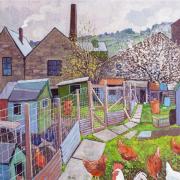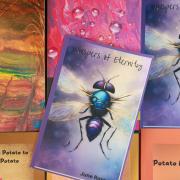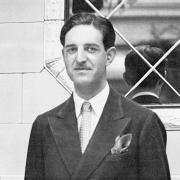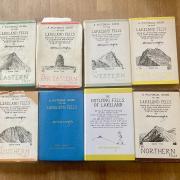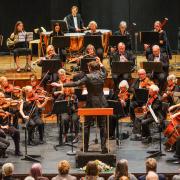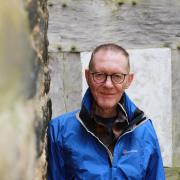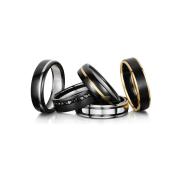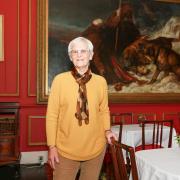With the success of Netflix show, Vikings Valhalla, we take a look at what did the Vikings do for us? And it turns out, quite a bit, as it happens.
The impact of the Romans on life in Britain is well documented and pretty well known: they built a wall to keep out the Scots and established forts across the country, connected by those arrow-straight roads they were fond of. They brought wine, fine foods, plants, animals, religion and much more.
But although it was more recent, much less is generally known about the Viking influence on Britain.
Now, an app developed by academics at the University of Liverpool aims to change that, and to reveal how important Lancashire and Lakeland were to the Norse settlers.
Dr Clare Downham is senior lecturer in Irish Studies at the university and an expert on the Vikings in Britain.
‘Lancashire was a crossroads for the Vikings between York and Dublin and this area was connected to the entire Viking trade network which reached from Canada to the Middle East,’ she said. ‘There have been finds of coins in Lancashire which came from the Middle East, this was a key place for them.
‘A lot of history is written from a London perspective and the North West can sometimes be seen as a peripheral player, but the Irish Sea coast was central to the Vikings.’

Her research has led to the development of the ‘Viking Age in the North West’ app which started by plotting key Viking sites around Liverpool onto a map. The aim was to widen to university’s reach into its local community and the response was overwhelmingly positive – the only criticism was that it didn’t include sites beyond the city.
‘I wanted to develop its reach and the app now covers an area up the coast from the Ribble to Carlisle,’ Clare added. ‘Eventually I’d like to add more inland sites as well because there’s lots more sites of interest across Lancashire and the Lake District.
‘There’s also real scope for developing heritage tourism around the region and for revealing some important aspects of Scandinavian history which a lot of people don’t know about.
‘Interest in Viking history has really grown in the last few years, with the Marvel film Thor, the Assassin’s Creed Valhalla video game and the television series The Last Kingdom. Heysham Viking Festival has been successful for years so there is already interest, so the app will hopefully add to that and will maybe help people to join up the sites.’
Clare grew up in Cheshire but her father’s side of the family were from near Kendal and she fell in love with the area on holidays and visits to see grandparents.
She was a student at St Andrews and Cambridge and worked as a research scholar in Dublin and as a lecturer in Celtic and History in Aberdeen before starting at Liverpool in 2010. Much of her recent research has focused on contact across the Irish Sea during the Middle Ages.
And one story of an Irish Sea crossing has fascinated Clare since she was young: the tale of St Bega, an Irish princess who was reputedly promised in marriage to a Viking prince and fled across the water to land at St Bees.
That is one of almost 100 sites listed on the app and clicking on each location marker takes the user to some entry-level information, photographs and links to more detailed research. Clare’s map uses simple arrows to identify the sites, rather than the horned helmets we’ve gone with.
‘There’s no archaeological evidence that they wore anything like that,’ Clare said, patiently but really quite firmly. ‘People quite like the stereotype but the more you learn, the more you understand their contribution to our history. As knowledge improves, we see more evidence of the ways Vikings assimilated – farmed the land here and became a part of mediaeval society here.’
Moving on swiftly, does she have any particular favourite Viking sites? ‘There is a cluster of sites around Lancaster,’ clearly glad to be back on solid historic ground. ‘At Halton St Wilfreds there’s a beautiful cross in the churchyard which shows scenes from Norse mythology. At the church in Bolton-le-Sands there are fragments of two Viking sculptures and St Peters at Heysham there’s the Viking hogback which is richly decorated and may once have stood on the site of a Viking grave. That's my favourite cluster, there’s half a dozen or more sites of Viking interest all pretty close to one another.’

Clare hopes to extend the reach of the app further inland over time, if it proves popular, but even before that happens, the Viking influence is evident on any map of the region.
‘We owe several places names and words to the Vikings,’ Clare said. ‘Places like Fomby and Ireby were the settlement of a person or group, “thwaite” is a Norse word for clearing, and that’s where we get place names such as Crosthwaite. The Vikings also gave us the words “Dale”, “Fell”,”Beck” and others which entered our dialect.’

-
You can find the app by searching for ‘The Viking Age in the North West’ in the App Store or Google Play.
Finding buried treasure

The Cuerdale Hoard was one of the items to feature in our History of Lancashire in 70 Objects, which was part of our 70th anniversary celebrations five years ago.
It is an extremely important find that sheds light on Lancashire’s international links 1,100 years ago and demonstrates the county’s strategic importance as a place where major route ways meet.
On May 15, 1840 workmen repairing the south bank of the River Ribble at Cuerdale found the remains of a lead-lined chest that had been buried for more than 900 years. Inside was a huge hoard of Viking silver – the largest ever found in Europe.
There were 7,500 coins and 1,000 silver objects including rings, ingots, amulets, chains, cut-up brooches and armlets. These were buried in about 905AD when the Ribble valley was the main route between Viking York and the Irish Sea. It is likely that the hoard was intended as payment for an army to retake Dublin.
The hoard was declared Treasure and was distributed between museums and collectors by the Duchy of Lancaster – including the 88 coins now at the Harris Museum. The British Museum’s Cuerdale coins include those from Eastern Europe and the Islamic world.
To re-visit our History of Lancashire in 70 Objects, go online to greatbritishlife.co.uk/people/a-history-of-lancashire-in-70-objects-7013598
A brief history of Vikings in Britain
The Vikings first invaded Britain in the late eighth century and, after sacking the odd monastery, set about trading, farming and settling down to family life, all of which they did successfully for almost 300 years.
And while most people know very little about their time here, their legacy is all around us, in common words, place names, and objects they left behind.
There is one key Viking-related date in English history that everyone knows though: 1066. That was the year of the last Viking invasion which was the precursor to King Harold getting something in his eye at the Battle of Hastings and William of Normandy earning himself the rather grand nickname, The Conqueror.
But it could all have been so different had Harold’s brother Tostig not been so desperate for power himself. With Harold and his troops waiting on the south coast for William’s ships to appear, Tostig, an Earl of Northumbria, realised the north was effectively up for grabs. Having enlisted the support of a massive Viking army, he attempted to seize control.
In late September, with Harold on a Sussex beach, a huge Viking fleet sailed into Yorkshire and attacked a Saxon garrison. When he received word of the invasion Harold believed that with winter on the way, the French would not now be coming, so he rallied his men for the march north. They arrived five days later and slaughtered the Vikings at Stamford Bridge, leaving Tostig and his ally, the legendary Viking king Harald Hadrada – as well as thousands more – dead.
Then Harold heard that the French had arrived and he had to scurry back south where his tired troops succumbed to a famous defeat. And the rest, as they say...



